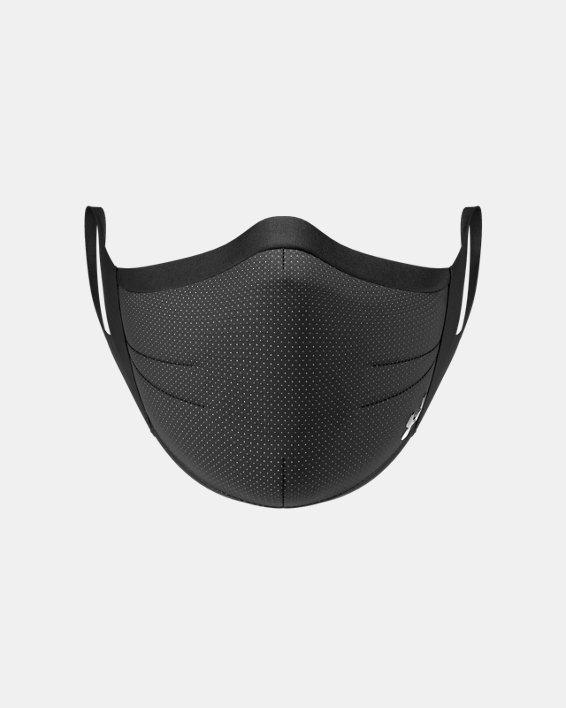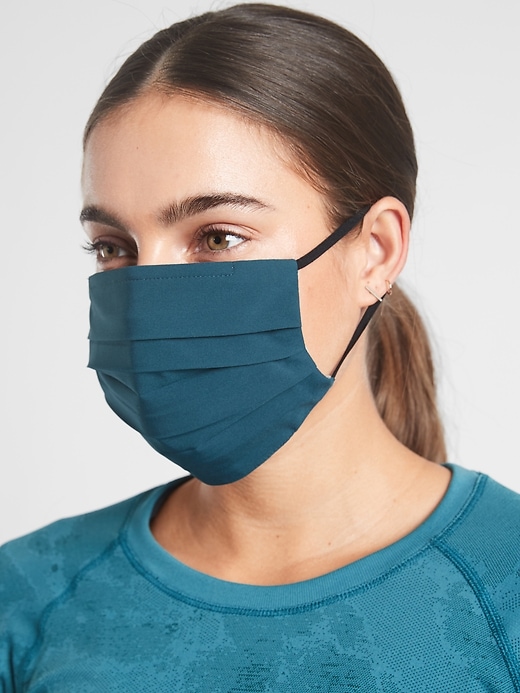Tips for Exercising with a Mask
Origianlly Published: Dec 03, 2020
As we push through the COVID-19 pandemic, it’s important that we do everything we can to help keep ourselves, and our community, healthy and safe. Right now, that means wearing a mask while in public indoor spaces, even while exercising.
We know that wearing a face covering while you’re jogging on a treadmill or dancing along to a Zumba class can be tough, so we’ve gathered some tips for you. Read on to see how you can improve your mask-wearing experience, along with some recommended masks from our team.
Tips for a Better Workout Experience
- Wear the right type of face covering.
The CDC recommends wearing a mask with two or more layers that is made out of a washable, breathable material. For exercise, opt for a moisture-wicking material like polyester. Paper or surgical masks may break down once they become wet, so avoid these if you expect to sweat a lot. - Pay attention to fit.
Chances are you’ll be moving around quite a bit while exercising. If you have to keep readjusting your mask, you are increasing the chance of transmitting germs to your face. According to the CDC, masks should be snug and fully cover your nose and mouth. Masks with adjustable ear straps are ideal, as they allow for a more custom fit to your face. - Monitor your exercise intensity.
Start with a lower intensity workout and gradually work your way up. Generally, it is safe to wear a mask while exercising, but be conscious of how you’re feeling – are you light-headed, dizzy, or tingly? These are signs that your body is not getting enough oxygen. Take a break and lower your intensity. - Practice patience.
Your body will take some time to adjust to wearing a mask while exercising. Even if you are in peak physical shape, expect to fatigue faster than normal. After a couple weeks, though, your body will acclimate and eventually your lungs and diaphragm will actually strengthen. - Bring a spare.
If your mask gets sweaty while you work out, it not only can become irritating and uncomfortable, but a damp mask also encourages the growth of bacteria. If you need to make a swap during or after your workout, make sure to remove your mask only using the straps and wash your hands after removing. You should also wash your masks regularly using warm or hot water and laundry detergent. - Use the opportunity to focus on breathwork.
A key benefit of yoga is its focus on mindful breathing. Slowing down and inhaling deeply can help lower stress, boost your mood, and even improve your immune system. You can use this same technique when you’re cranking out reps on the squat rack or logging miles on the bike. Focus on taking slow, controlled breaths through your nose and notice how you feel. Doing so will also help to decrease the amount of moisture that accumulates inside your mask! - Talk to your doctor.
If you have an underlying respiratory or cardiovascular condition, be sure to speak with your doctor before exercising with a mask. Depending on the severity of your condition, it may not be appropriate for you to exercise with a face covering.
. . .
Recommended Masks from Our Team
After a few months of wearing face coverings around the club, our team has learned a thing or two about what types work best. Here are two of our most recommended:

Under Armour designed this mask specifically with athletes in mind, with breathable material, anti-microbial lining, and a comfortable structure. Available in multiple sizes and colors.

These soft, breathable masks have an adjustable ear loop and pleated fabric to allow a better fit across difference face sizes and shapes. Available in packs of 5 and various colors.